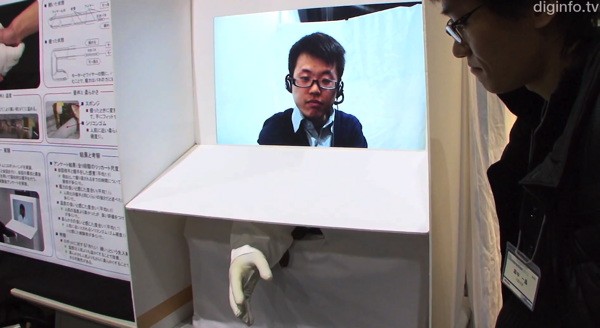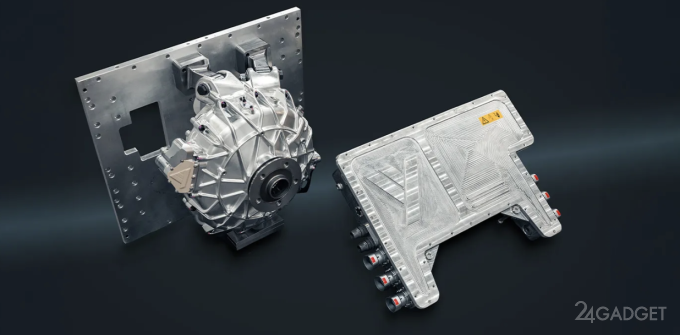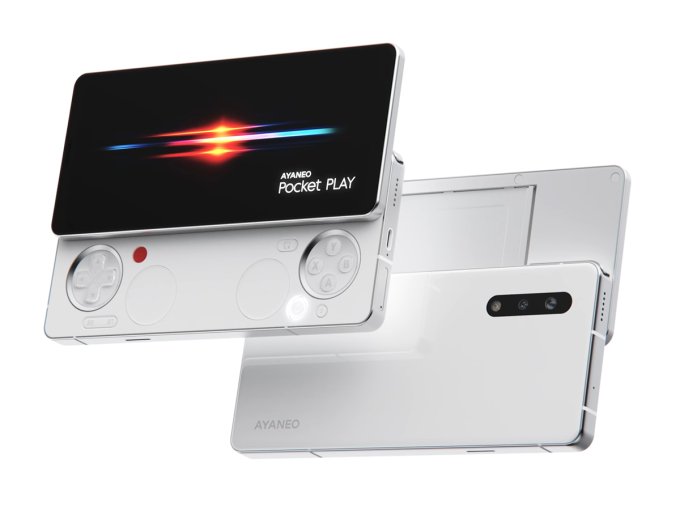Robot Hand Communicates Grip Force, Body Temperature and Touch (video)

"In ordinary video-conferencing systems, it's difficult even to see life-sized pictures of other people. But by attaching this robot hand, you can shake hands with people at a distance. Shaking hands like this gives a greater sense of other people's presence than you get with regular video-conferencing systems."
Results from preliminary trials showed that to reproduce a real person's hand, the three most important aspects were texture, temperature and a sufficient grip force. Here, silicone rubber and sponge are used to simulate the elasticity of human skin and the underlying muscle structure, with an appropriate temperature achieved through the use of a film heater.
"In fact, we did tests with the temperature set at human skin temperature. But people have the preconceived idea that a robot hand will feel cold, so we give it a temperature slightly higher than skin temperature. A person's skin temperature is about 32 degrees C, but we set the robot hand's temperature at 37 degrees C, so people feel it's about as warm as they are. This makes people feel the robot hand is as warm as a real person."
"Due to space constraints here, the hand is set to grip with one degree of freedom when a button is pressed. But we've already started to reproduce grip strength interactively, by installing a pressure sensor in the robot hand."
"We're thinking of applying this to tele-presence robots. Previous tele-presence robots simply have a display on a mobile platform. But once people know that with a hand, the robot can shake hands and have a greater level of presence, we think we can suggest our system as a new design for tele-presence robots, based on the results of tests like this."
Source: diginfo.tv




